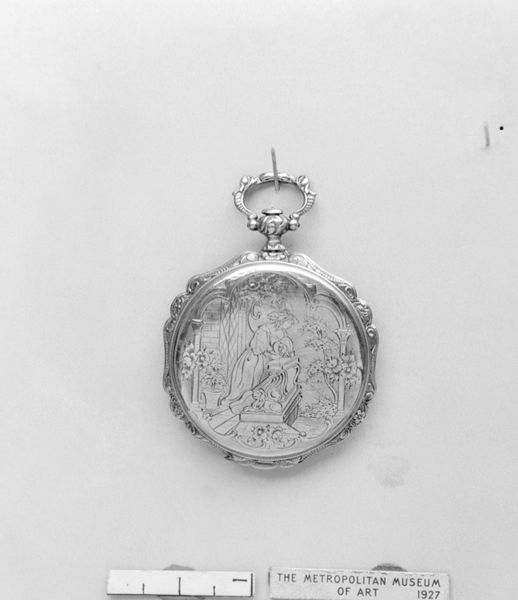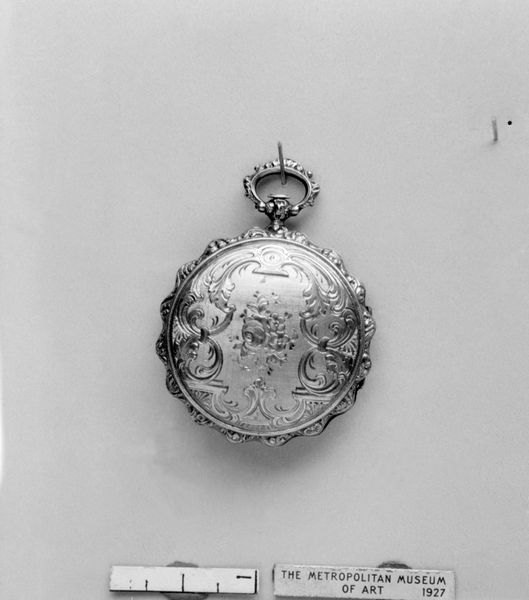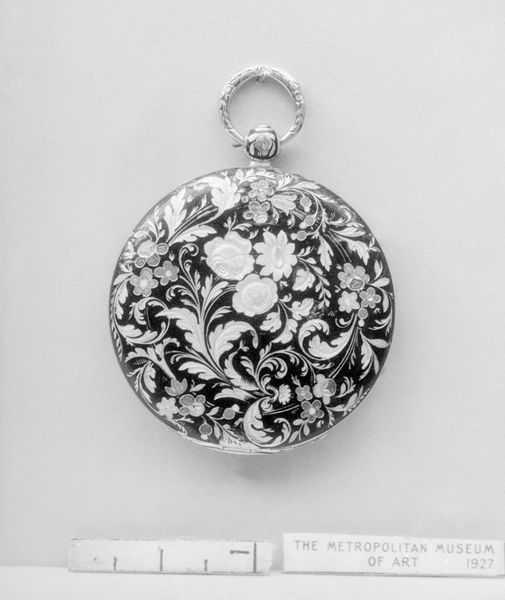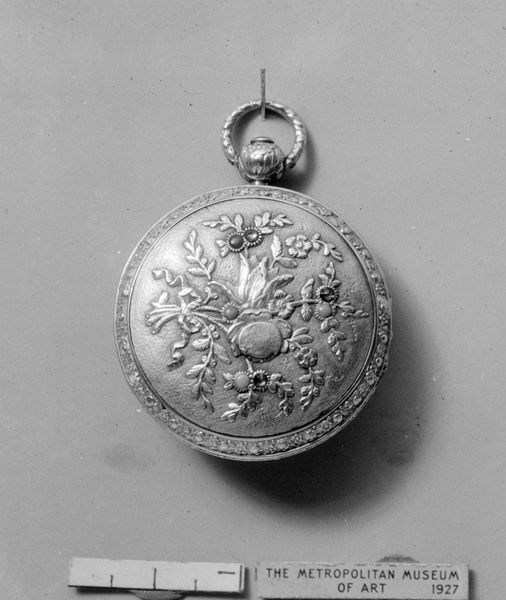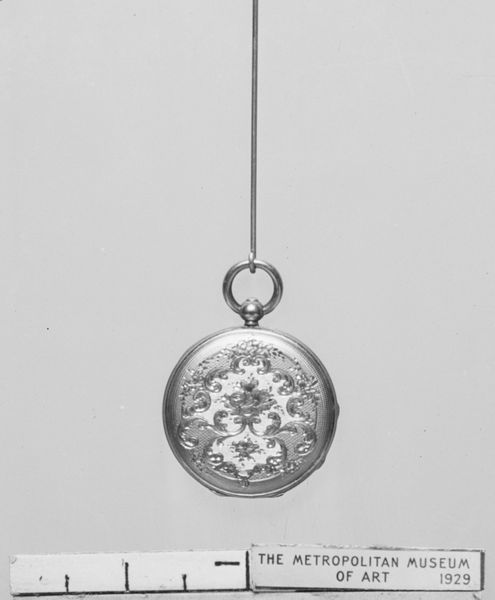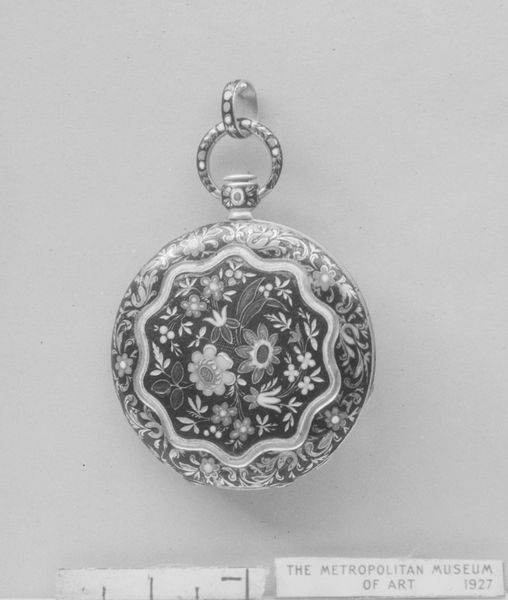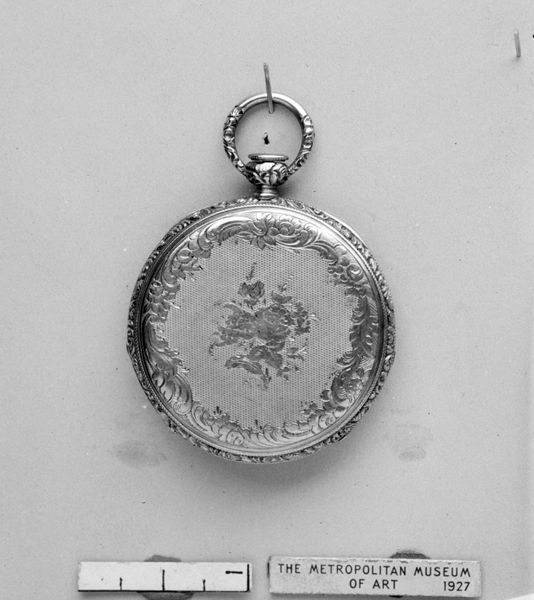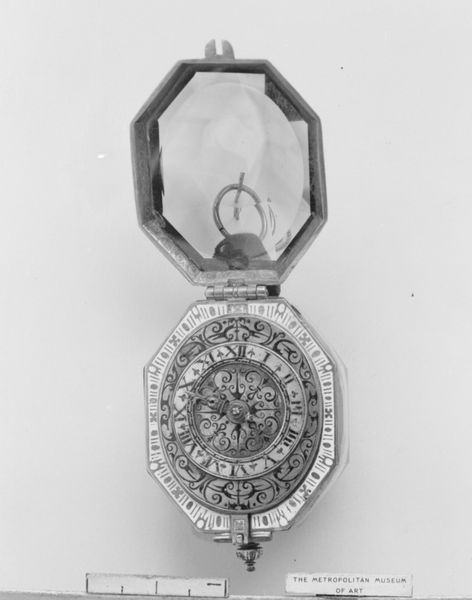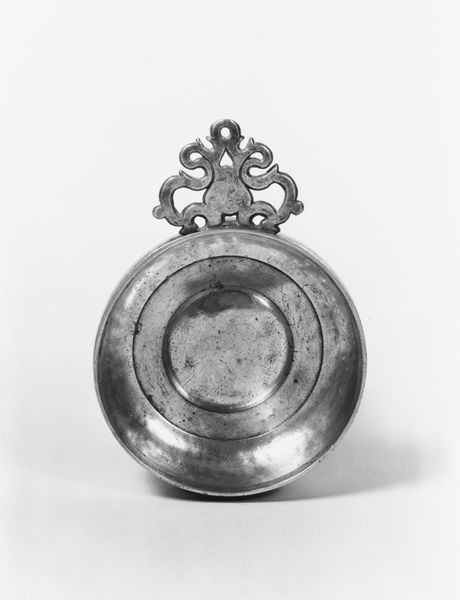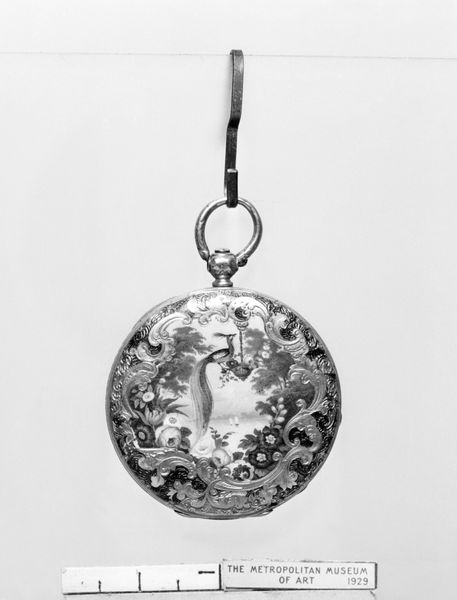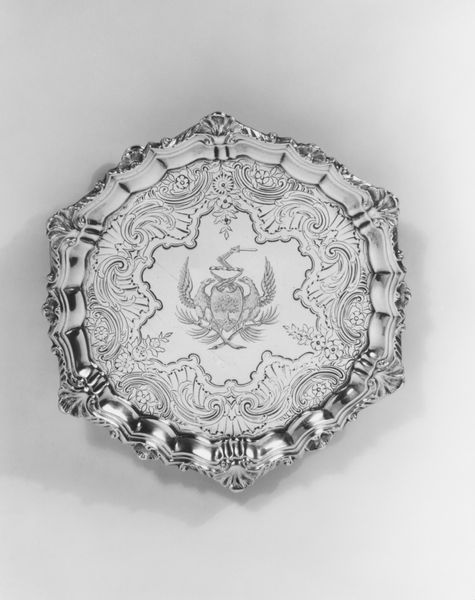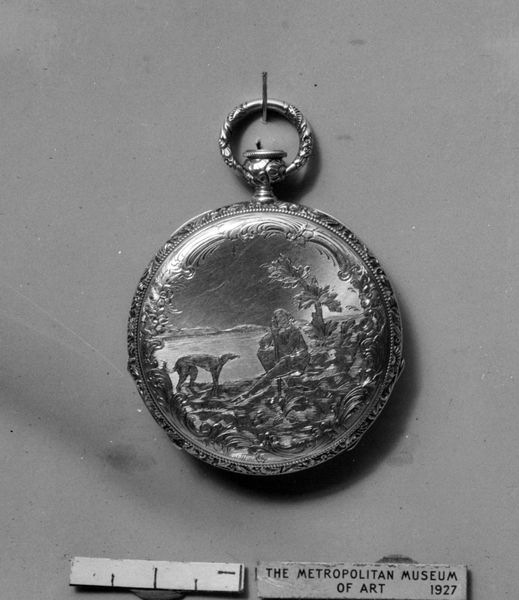
metal, sculpture
#
metal
#
sculpture
#
sculpture
#
romanticism
#
decorative-art
Dimensions: Diameter: 1 3/8 in. (3.5 cm)
Copyright: Public Domain
Editor: This exquisite pocket watch, crafted from metal by Frederick Courvoisier around 1830-1840, is housed at The Met. The floral detailing on its face really catches the eye. I'm curious about the context surrounding such a decorative piece of timekeeping. What can you tell us about its role in society back then? Curator: It's beautiful, isn't it? Objects like these, beyond their utilitarian function, were potent symbols of status. This watch signals rising social mobility and wealth during the early Industrial Revolution, especially within mercantile classes eager to emulate aristocratic styles. Ask yourself: What did owning such a decorative timepiece communicate about an individual in the 19th century? Editor: So it wasn’t just about knowing the time. It was about showing you could *afford* to know the time…in style. Was the imagery itself—the florals— significant beyond mere aesthetics? Curator: Absolutely. Floral motifs, prominent in Romanticism and decorative arts, spoke of refined taste and an appreciation for beauty, something increasingly associated with women in domestic settings. Its presence on a timepiece perhaps softens the burgeoning association of time with labor and industry that was developing. What do you make of the combination? Editor: That's fascinating, placing nature against the backdrop of industrialization. It challenges my initial interpretation and makes me see it as a commentary. Curator: Precisely! It’s also important to note the role of institutions like the Met itself. Consider how museums solidify notions of “good” taste and create narratives around objects and historical periods. These curated displays shape how we, even now, understand this watch’s significance. Editor: That gives me a lot to think about in terms of not only this artwork’s origins, but also its presence and framing within this museum today. Curator: Exactly. History is layered. I found this interesting too and would encourage listeners to view museum art through that lens going forward.
Comments
No comments
Be the first to comment and join the conversation on the ultimate creative platform.

